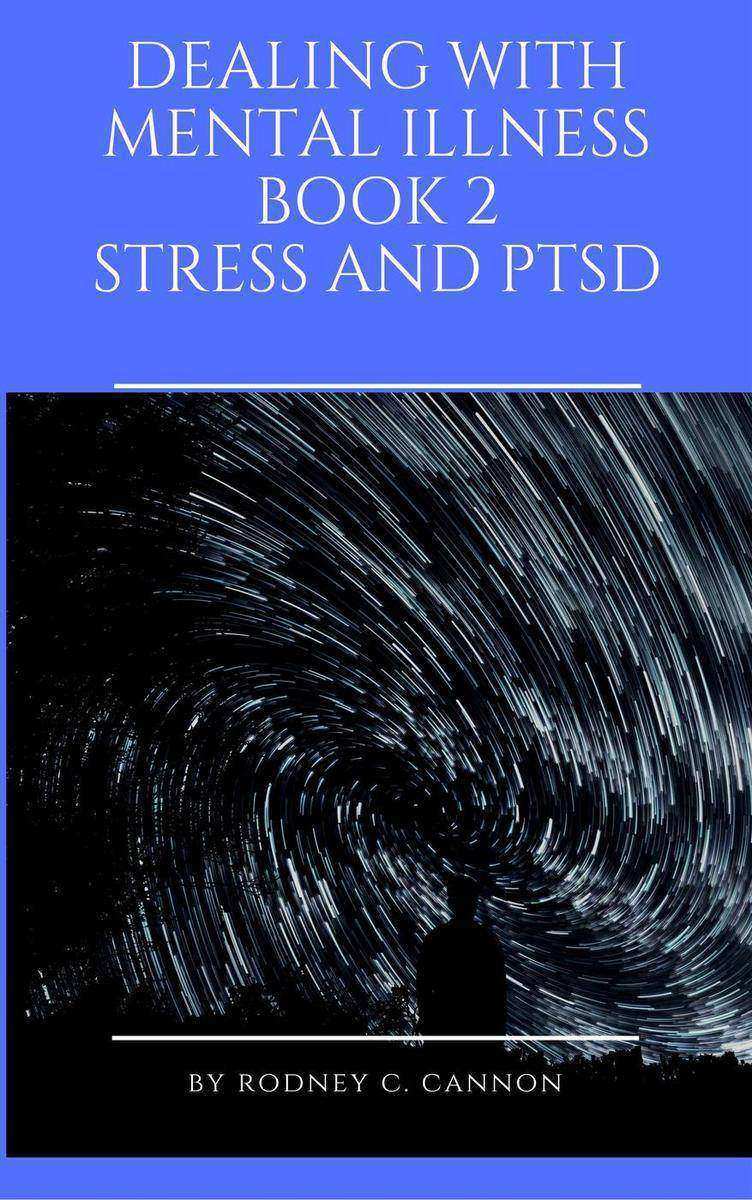
Dealing With Mental Illness Book 2:Stress and PTSD
¥8.09
Dealing With Mental Illness Book 2 contains two books about two of the most overlooked mental ailments. Most people believe that Stress is normal and cannot do any long term harm. Stress can kill you if you overlook it and Post Traumatic Stress Disorder can go undiagnosed for years. It can do damage to your body and finances in ways that you are totally unaware of. ?Dealing with Stress is perhaps the most important thing that you will ever do. Stress -Dealing with Stress will offer you a comprehensive overview of what stress is and how to deal with it both in terms of its effect biologically, chemically and emotionally. The thing about stress it that it is perhaps the number one cause of other mental illnesses such as Depression and PTSD. It can do tremendous damage to your physical health as well. Stress can lead to weight gain or serious weight loss. Stress can cause heart attacks and strokes. If you do not learn how to manage and to deal with stress it can kill you. The good news is that stress can be managed with medication, exercise and simple activates that you will be introduced to in my book Stress, Dealing With Stress. Dealing with Post Traumatic Stress There was a time not so long ago when someone suffered a great trauma or a tragic event the sufferer was expected to get over it. The idea that real and lasting damage had been done was dismissed. Soldiers who suffered from what was called battle fatigue were called cowards and those who did not quickly get over a lo ss or a serious trauma were considered weak. Since then we have learned to call this and so much more post-traumatic stress disorder, that mental injuries are as real as physical ones. In this book I hope to explore the common types of this disorder. How to recognize it in yourself and others and the road back from it. I suffered through many years of nightmares and flashbacks before discovering that this was not normal, that I was suffering from this ailment. I found a way to deal with my PTSD and hopefully you will too.

The Amen Vibration:Volume II
¥0.01
This book is for seekers of truth beyond the teachings of parents, churches, schools, and communities. Forty years in the making, it includes the physical, mental, emotional and spiritual aspects of living, from the seemingly obvious to the occult, from the boundless diversity of paths toward Divine understanding and the unification of it all. The unity of the universe as functions of light and sound is explained and demonstrated in many examples. Light and sound are part of the same continuum of vibrations; they are simply different frequencies, as are things we see and hear, as well as microwaves, infrared light, and so on. At the heart of this continuum is the sound of the universe, the primordial Word: the Om of the Taoists, Aum of the Hindus and Buddhists, Amen of the Christians, Hu of the Ecks or the religion of Light and Sound and Hum of the Tibetans. These phenomena are explored by the author, who has experienced the discovery of one’s self and place in the universe.
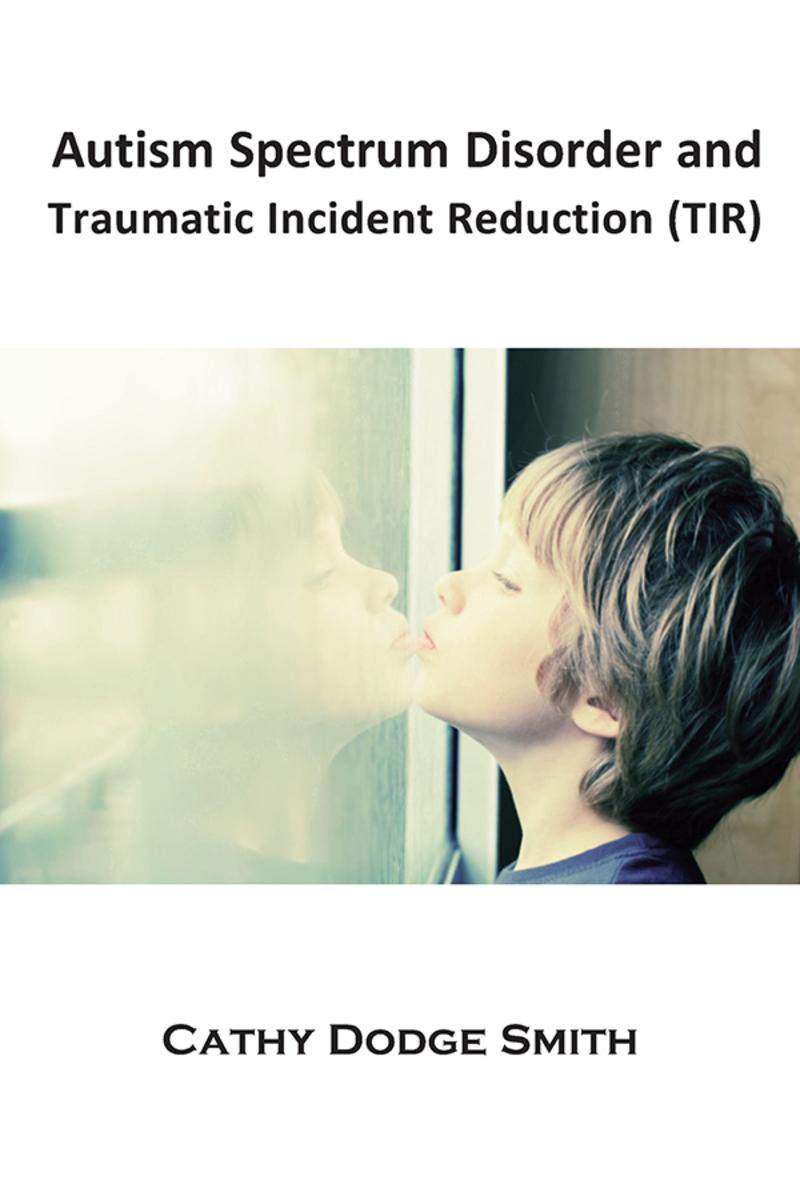
Autism Spectrum Disorder and Traumatic Incident Reduction (TIR):An Introduction
¥24.44
Let's consider why Traumatic Incident Reduction (TIR) would be expected to be different with an autistic client. One of the hallmarks of autism is a lack of connection with the real world, so the world view of an autistic individual is limited and often very inaccurate. A second hallmark of autism is difficulty with intrapersonal and interpersonal relationships so that insight into how to make relationships better, or work at all, would be expected to be limited. So, within a TIR session where we expect our clients to come up with their own insights, that's really a tall order. Then the meltdowns I've talked about; as a Davis facilitator I understand these as prolonged and severe disorientations, analogous to a PTSD episode, in which the emotional reaction is really out of sync with true facts and conditions in the current situation. Added to all this are the phobias and the extreme aversions that many autistic individuals experience, which can limit full participation in life. One of the things that makes working with autistic clients challenging is that often we simply have to wait until they give us that little window of time when they are able and willing to proceed. If I were to use the guidelines in my TIR Workshop manual, I would have to conclude that there was not enough ego strength or resiliency in these individuals for them to be able to engage for a successful TIR session. You know what they say about fools who rush in where angels fear to tread... A less foolish person than I am, and especially someone new to TIR, would likely never have tried to use TIR with autistic clients. However, based on the wonderful results I have seen using TIR with many of my other clients who do not have autism, and some of the really significant problems that some of my autistic clients were presenting, I decided to try TIR with a few of them. In the remainder of this lecture, we'll consider two specific case studies. Veronica, a sixteen-year old who basically lived as a recluse in her mother's basement, and , a young boy obsessed with drum kits who was given to periods of extremely oppositional behavior. Cathy Dodge Smith uses Davis Methods in her practice (Davis Dyslexia Correction Program, Davis Autism Approach, and Davis Attention Mastery ). She is also a Certified TIR Facilitator. This article is from her presentation at the 2014 Symposium. Originally appeared in AMI/TIRA Newsletter, Volume XII, Number 1 (March 2015).
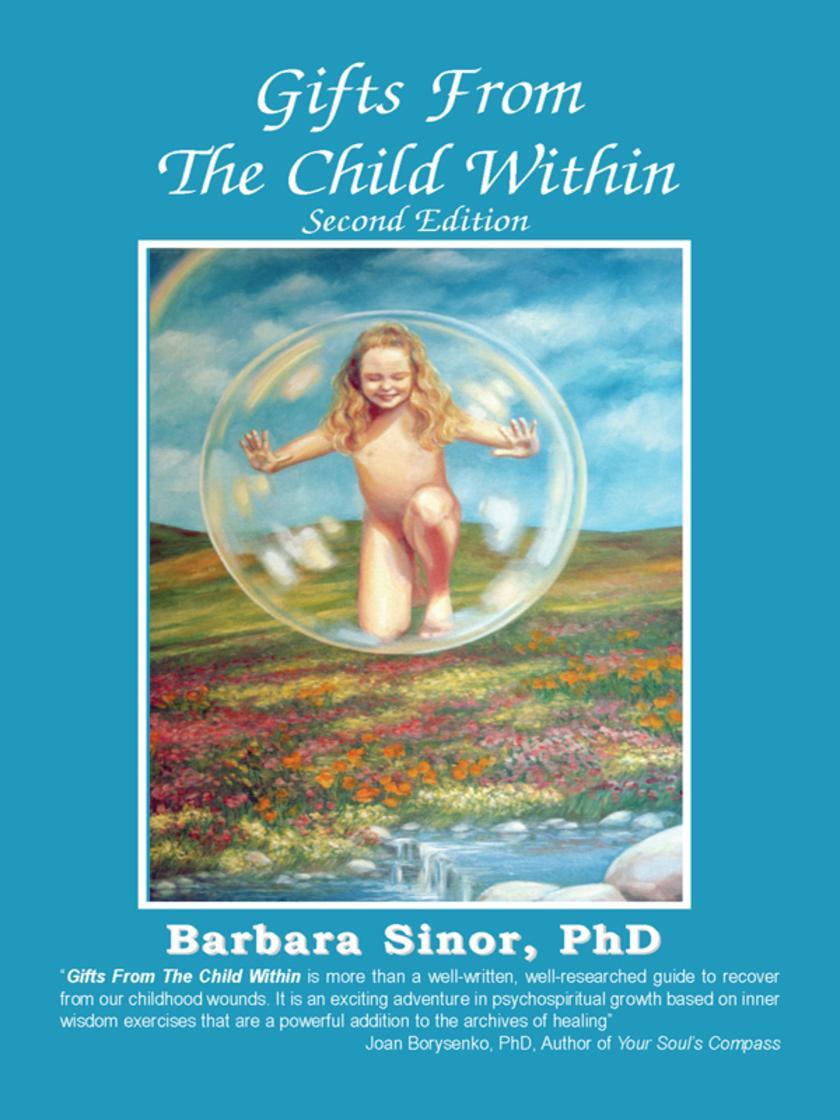
Gifts From The Child Within:A Recovery Workbook
¥65.99
Gifts From the Child Within brings a refreshing approach to guiding its reader to understanding the initial or underlying basis to their emotional suffering due to past childhood trauma. This recovery book is geared toward both professional and layperson. Its pages are filled with offerings from psychological, physiological, and spiritual perspectives which takes the reader on a journey into the soul. It is written with sensitivity and clarity inviting the reader to search within for healing. As the author shares her own journey of childhood abuse, the reader is asked to address issues surrounding physical, mental, spiritual, and sexual abuse. Instructions are captured to guide one toward reaching for their own child within; releasing negative emotions; re-creating outdated childhood beliefs; and, to recognize the gifts the inner child has for us. The process of Re-Creation Therapy(tm) is introduced by the author allowing the reader who follows its guidance to reap the effects of gradual changes in self-awareness which lead to a greater understanding of the psychodynamics the child within plays in the adult life. Included are a series of healing visualizations and autohypnosis suggestions; blank journal pages; and sample affirmations following each chapter.What Experts Say About Gifts From The Child Within "This is indeed a valuable self-help book and a tool for the Counselor, Hypnotherapist, Minister, Psychotherapist, or Clinician. I assure you, the world will look much brighter after you read this book." --Lavona Stillman, PhD, CC, HT "Barbara Sinor has written a book that will help the violated and traumatized child within to heal. Gifts From The Child Within helps guide survivors with repressed memories of trauma, as well as those with current memories of incest, through the healing process." Marilyn Van Derbur, Miss America 1958, Founder: Survivor's United Network "Barbara Sinor has bridged the gap for clients and therapists alike between the mere discovery of the inner child and the building of a true relationship with this most important being within. Gifts From The Child Within is an important and highly readable work." Rick Boyes, M. Coun, CHT, Author A Body To Die For "Gifts From The Child Within is a wonderful book that takes the reader on a journey into the soul. Flowing and readable, this book is filled with stories, myths, information, and revelation." Marilyn Gordon, CHT, Author, Healing is Remembering Who You Are For more information: see www.DrSinor.com
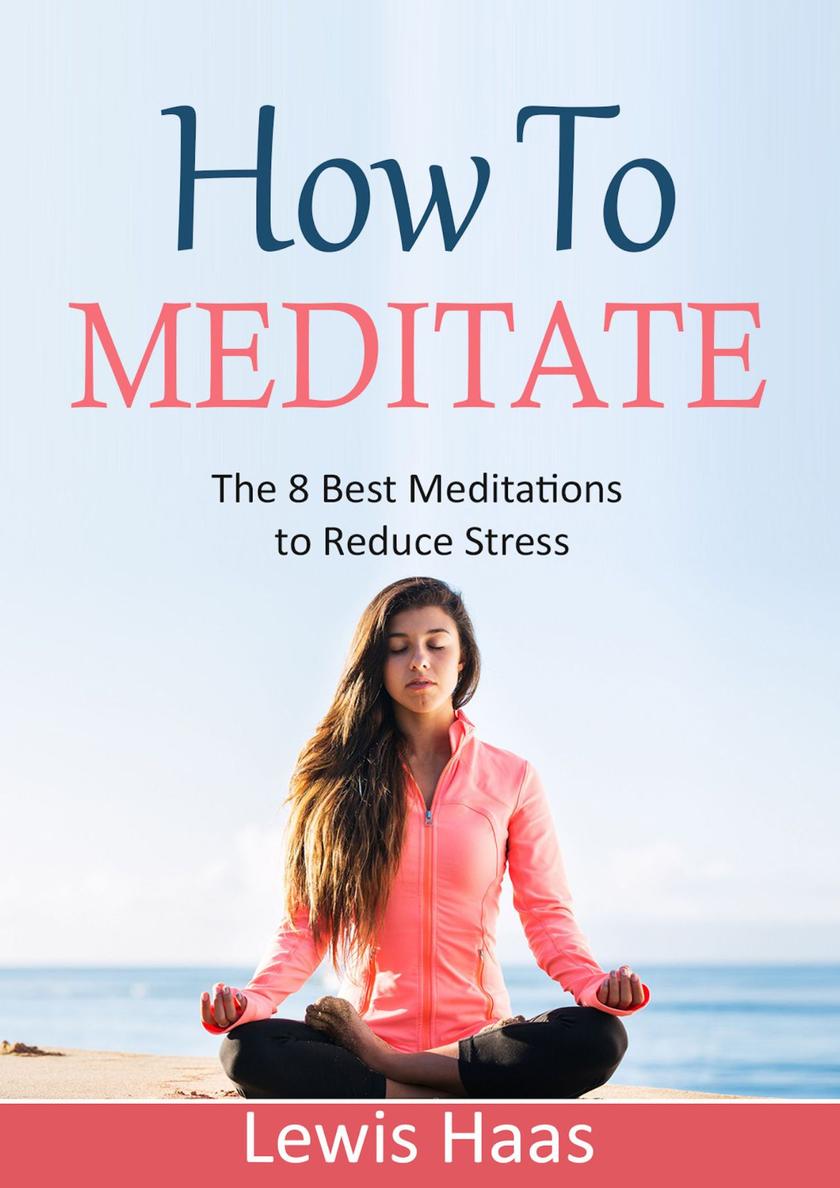
How to Meditate:The 8 Best Meditations to Reduce Stress
¥24.44
A Meditation Guide for Beginners – Learn how meditation can transform your life TODAY! Are you looking for ways to reduce stress, keep calm and ease your mind? Then How to Meditate is a guide for beginners and newbies to mindfulness and meditation. This short book has concise answers to all you wanted to know about meditating. How to Meditate?is an excellent step-by-step beginner’s manual for everything you need to know about meditation and how to successfully meditate every day. How to Meditate?teaches you: ·The different types of meditation·What meditation practice works best for you·How meditation works·Who meditating is for·And?much more! Learn How to Meditate Today! Buy Your Copy Now!?
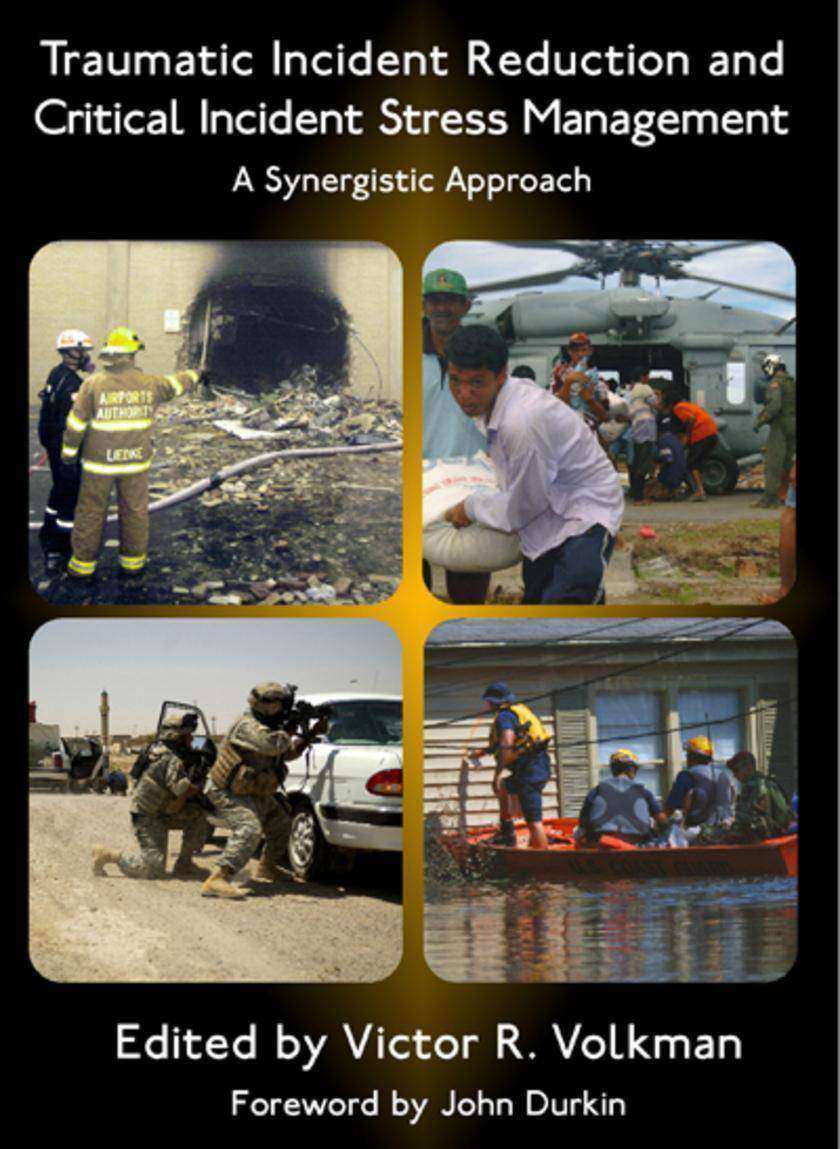
Traumatic Incident Reduction and Critical Incident Stress Management
¥56.82
From the Foreword: TIR offers an opportunity for the members of a CISM team to deal with any accumulated emotional baggage that their involvement in crisis-intervention has created. Training in TIR adds another tool to the toolkit of crisis-intervention techniques and enables peer-support to ad-dress an extended range of crisis-reactions, even those that might justify a clinical diagnosis. If virtually all the emotional reactions of a colleague in crisis could be ac-commodated and addressed through CISM and TIR, then the difference to the individual, the CISM team and the community would be immense. I look forward to the day that what practitioners of CISM and TIR already know is recognized in order for these approaches to be embraced and enjoyed more widely. What Traumatologists Are Saying about TIR and CISM... "Now, as a psychologist, I think I can see what would have helped me-after the injury that led to PTSD andretirement as a firefighter-and why. I now train firefighters and paramedics in the crisis-intervention tactics of CISM and offer TIR training to the same people." -John Durkin, www.FireStress.co.uk "After the crisis is over, and the CISM team has done crisis management briefings and debriefings, both crisis responders and victims who continue to be negatively affected by the traumatic incident will benefit greatly by using TIR to get back to normal as quickly as possible." -Nancy Day, CTS, TIR Trainer "Specific training in TIR skills speeds the process of a person moving from novice to fully effective practitioner. One idea would be for this skill set to be included in CISD training." -Jill Boyd, RN, MS "TIR has developed crucial understanding and training by managing communication and the development of rules of practice that can surely inform and enrich CISD sessions as well as other similar techniques." -Carlos Velazquez-Garcia, Psych., CT (Puerto Rico) "Each modality can be enhanced by the skills and training that the other provides. CISM without TIR is missing the opportunities to complete the process. TIR without CISM training is missing the structure for working with and understanding the bigger process." -Gerry Bock, MA, RCC (Vancouver, BC) About the TIR Applications Series This new series from Loving Healing Press brings you information and anecdotes about Traumatic Incident Reduction and related techniques. Practitioners around the world use these Applied Metapsychology techniques. It is our opinion that stories of real-world experience convey the opportunity for healing that TIR provides. Readers interested in the theories behind TIR and Applied Metapsychology (the subject from which TIR is derived) should also consider the Explorations in Metapsychology Series from Loving Healing Press. Learn more at www.TIR.org

A to Z Shampoo Recipes for Total Beginners25 Easy Shampoo Recipes
¥32.62
Save Hundreds of Dollars Making Your Own, Better, More Healthy Shampoo. This Book includes links to 50 plus, free healthy Mexican Recipes. Did you know that an average person has around 130,000 strands of hair on their head? Can you imagine what happens when you do not take care of all these strands? Wayne Rooney is a professional footballer that underwent a hair transplant. A hair transplant is the right way for fixing hair loss, but guess what? It can cost you an arm and a leg! Scientists have discovered that overuse of commercial shampoos can cause deadly hair loss problems. Let us do an easy five-minute procedure that will end up making a nice smelling, cheap, natural and reliable shampoo. Making one's hair oily has a lot of reasons behind it. Most commercial shampoos are acidic, denuding your hair glands that produce natural oils. To resolve this issue, you have to go organic. The benefits that come with an oily hair include having a natural protective substance - the natural hair oil. If you do not have an oily hair, there is no cause for alarm. The variations seen between oily and non-oily hair mostly result from genetics. The shampoo moisturizes and softens greasy hair. It also protects the hair against the environment, especially harsh sunlight. Do you want to save money? If you yes, then you can make your natural shampoo that's way better than most expensive commercial shampoos. Here is how.

A to Z Making Organic Perfumes at Home for Total Beginners
¥32.62
Have you ever sat in a bus, a café, or any other public place where within seconds of sitting you start feeling the need to sneeze or puke due to strong scents exhumed by someone who has either heavily used a synthetic perfume or whose perfume though lightly used scents so strongly as a result of its synthetic nature? It leaves you breathless with itching and sometimes watering eyes. Synthetic perfumes, as opposed to organic perfumes, always do this. They leave no space for fresh air. Justin Timberlake once said: The right scent can make you feel a little more stylish, but it should never eclipse who you are. It should compliment who you are. This statement holds water. Perfumes should make a first impression that speaks about who you are. They should compliment you. Synthetic perfumes do the direct opposite. They announce their presence so strongly that you are overshadowed and fade into the background. Synthetic perfumes can also be risky health-wise as a result of their components which ranges from carcinogenic content to toxic petroleum products. You sure do not want to risk any of these. Scents leave an impression. There, thus, arises a need for perfumes that give scents you would want to keep perceiving as they give a good first impression, pose no threat and perfectly compliment you. Remember, first impressions last for a long time. The answer to this is organic perfumes. Organic perfumes do not only give better scents but are safe. They can easily be made which is why we have compiled a couple of recipes that would aid your creating a scent that suits your personality. As Shakira once said: “A good fragrance should have a certain personality that makes people identify the scent with you.” This is well said. Knowing how to prepare your own organic perfumes will help you take note of combinations that best describe who you are.
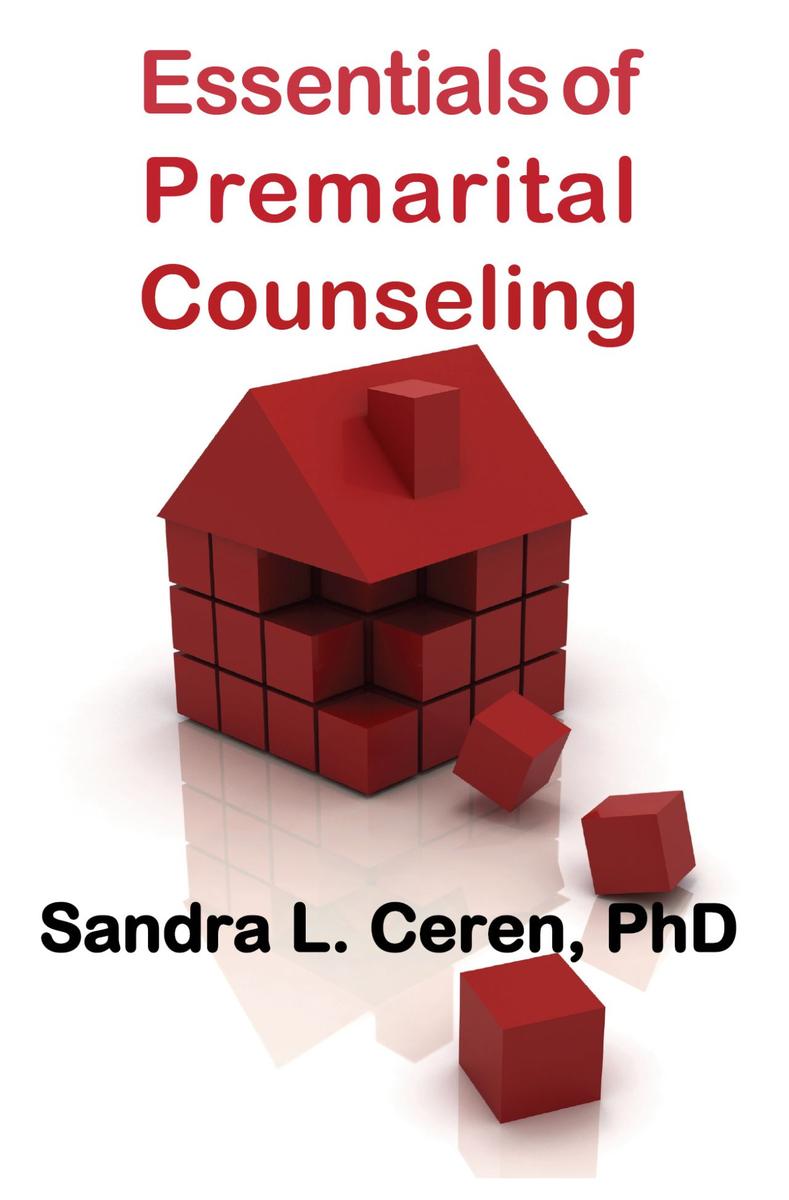
Essentials of Pre-Marital Counseling:Creating Compatible Couples
¥65.99
Expand Your Clinical Practice with this Practical Hands-on Guide ·Teach conflict resolution skills to your couples ·Introspective quizzes expose more of couples' inner lives and past history to each other ·Real-life exercises let couples practice cooperative decision- making and compromise before a crisis happens. ·Couples will discover and have the opportunity to change bad habits which threaten the viability of the relationship.Therapists Acclaim for Essentials of Pre-Marital Counseling"An invaluable ten-week program of specific steps to evaluate a relationship, detect warning signs and avoid disastrous pitfalls before committing to marriage."--Holly A. Hunt, PhD, author of Essentials of Private Practice "What I find most rewarding about this book is what Dr. Ceren refers to as 'The art of gracious compromise'-or what may be called-how to get along in your relationship. Therapists take heed, this book is for you and your clients! You will benefit greatly."--Michael J. Salamon, Ph.D., FICPP, Senior Psychologist/Director, Adult Developmental Center, Author of The Shidduch Crisis"A remarkable roadmap to a healthy relationship and insight into self, written by a therapist who combines experience and skill in improving the lives of others." --Rosalee G. Weiss, PhD Diplomate, American Board of Psychological Specialties Learn more about the author at www.DrSandraLevyCeren.comBook #7 in the New Horizons in Therapy Seriesfrom Loving Healing Press www.LHPress.com

Looking Through the Trauma Lens
¥24.44
I developed renewed faith in the power of psychotherapy after I attended a Traumatic Incident Reduction (TIR) course in 2011. It opened many doors for me as I began to understand the impact of previously overlooked, objectively minor traumatic incidents on psychological disorders and problems. This article is about the application of this powerful tool over the entire spectrum of psychological problems and disorders and how this brings about impressive and permanent change. The optimal use of this tool in psychotherapy requires a shift in epistemology in which we begin to view mental health through a trauma lens. The definition of psychological trauma can vary. From a TIR perspective, trauma can be defined as any incident that had a negative physical or emotional impact on an individual. This is a very subjective issue as the something could be perceived as traumatic by one individual, but as commonplace and harmless by another. The important thing is the emotional and physical impact the incident had on the individual, its subjective impact. The reason it is so important to view trauma in the broadest way possible is because it explains the chronic mood states of our clients as well as how subconscious intentions and automatic emotional responses affect their current lives. These will be explained below. Traumatic incidents, when understood in the broadest sense possible, have a massive effect on our neurobiology, emotional states and behavioral patterns. Therefore, they can be seen as the driving force behind almost all psychological problems and disorders. When I say traumatic incidents "in the broadest sense possible," I refer to the everyday incidents of trauma that are objectively perceived as minor, such as an embarrassing comment by a teacher, conflict with a friend, breaking your mother's expensive vase, etc. It involves an understanding of how the emotional knocks we take on a daily basis affect our neurobiology and continue to have an impact on us in later life. The understanding of subconscious intentions, automatic emotional reactions and responses and chronic mood states are so crucial when it comes to looking at mental health through a trauma lens. Minor and major psychological and physical trauma involves a complex description of the effects on the brain. This article includes detailed case studies including specific incidents such as birth trauma and jealousy and rage. We will look in detail at how trauma results in Goleman's "Amygdala Hijacking" and how we can help the client break destructive cycles. I also explain why sheer willpower is insufficient to change behavior in the face of traumatic restimulation. Additionally, the article explains how TIR avoids re-traumatization even as clients revisit past incidents.
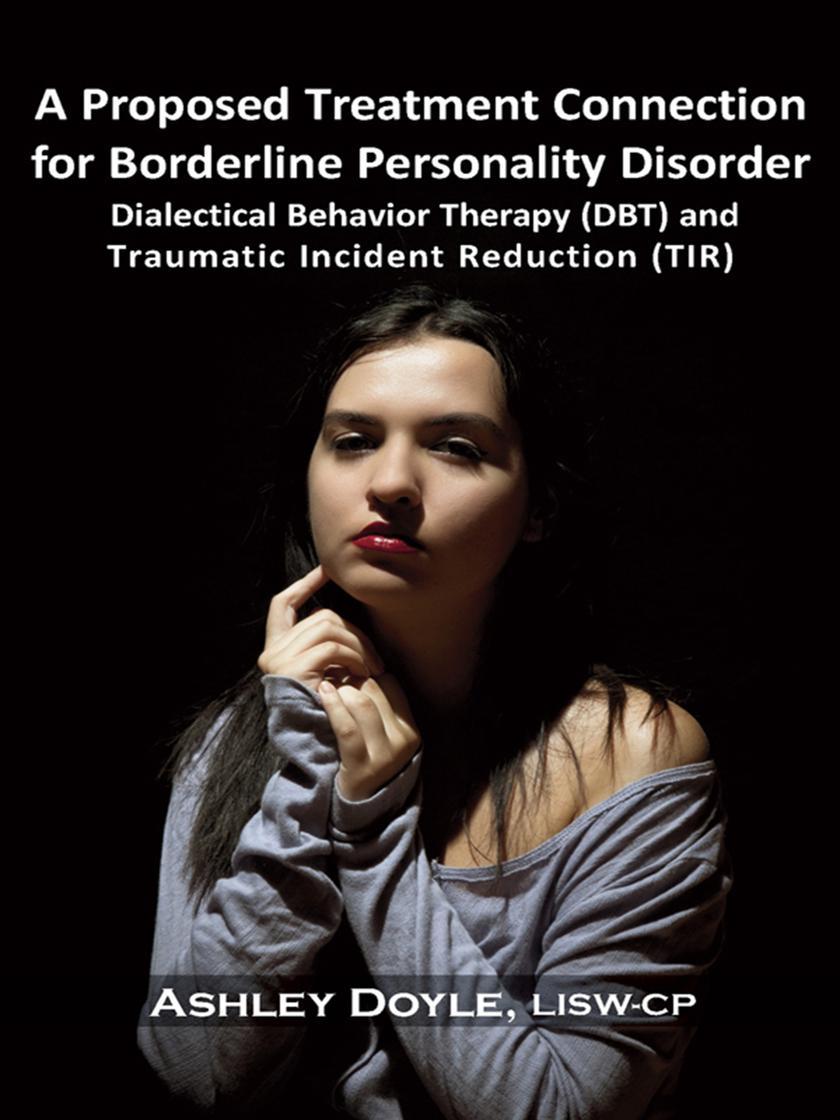
A Proposed Treatment Connection for Borderline Personality Disorder (BPD)
¥24.44
A large percentage of the population experiences some type of trauma in their lifetime; however, they don't all develop a diagnosable disorder. Even though no research can definitively predict what types of traumas will elicit a diagnosable disorder, there has been some indication as to who is more at risk for the development of trauma-related disorders, specifically Acute Stress Disorder (ASD) and Posttraumatic Stress Disorder (PTSD). Yet other disorders may also be elicited such as anxiety disorders, depressive disorders, or personality disorders. Children, the elderly, and the disabled are labeled at-risk due to their dependency on others, sparse coping strategies and resources, and economic disadvantages. Additionally, individuals who experience extra stressors, low-self esteem, and have a poor sense of self are also at risk of developing a disorder rather than use resiliency (Petersen & Walker, 2003). One extreme reaction to trauma exposure is the elicitation of a personality disorder, specifically Borderline Personality Disorder (BPD). The focus of this paper is three-fold. First, it compares two treatment approaches: Dialectical Behavior Therapy (DBT) and Traumatic Incident Reduction (TIR). These are different in technique and philosophy when regarding the processing of traumatic events. Second, it reviews the evidence for co-morbidity (simultaneous occurrence) between BPD and PTSD. Finally, this paper will propose a strategic plan for the most effective treatment for individuals with BPD and PTSD symptoms. Metapsychology Monographs #8 Learn more at www.TIRbook.com
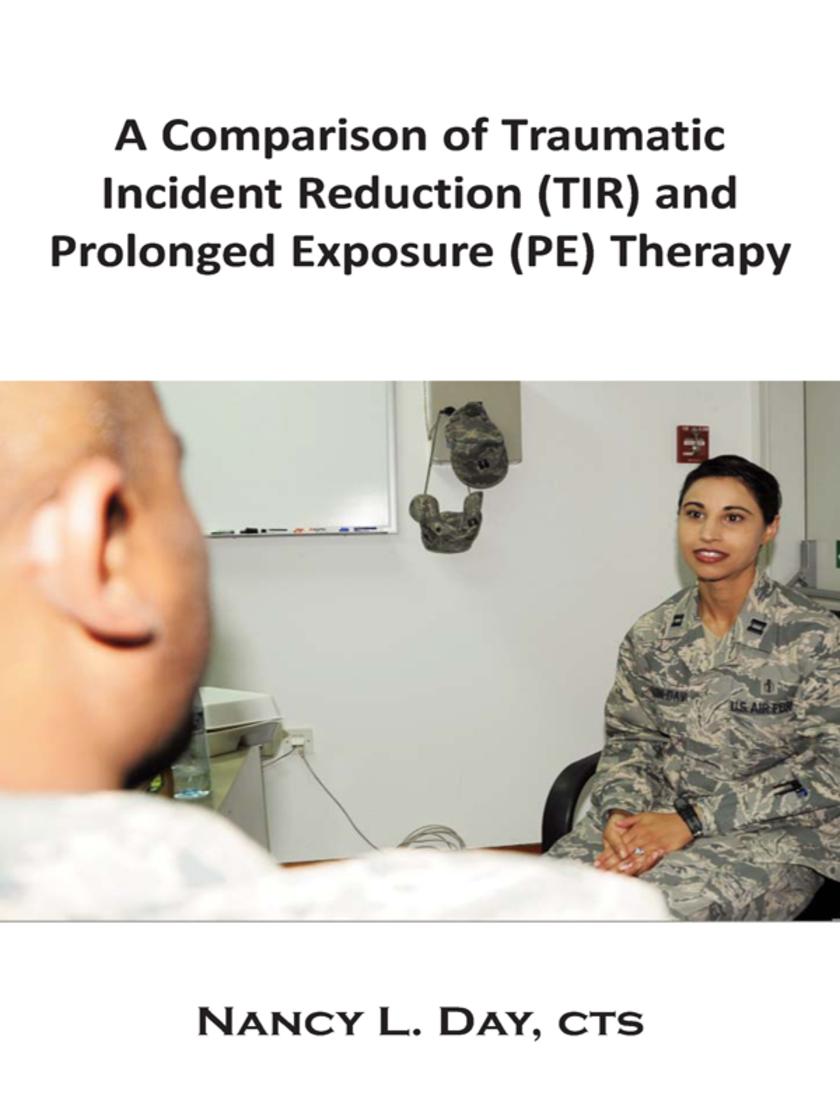
A Comparison of Traumatic Incident Reduction (TIR) and Prolonged Exposure (PE) T
¥24.44
Program developer Edna B. Foa, Ph.D. summarizes Prolonged Exposure (PE) therapy as a cognitive-behavioral treatment program for individuals suffering from Post-Traumatic Stress Disorder (PTSD). The program consists of a course of individual therapy designed to help clients process traumatic events and thus reduce trauma-induced psychological disturbance. The standard treatment program consists of nine to twelve 90-minute sessions. (SAMHSA, 2003) Frank A. Gerbode, M.D., psychiatrist, and one of the principal developers of Traumatic Incident Reduction (TIR) summarizes TIR as a procedure that involves tracing back sequences of traumatic incidents to their roots while completing the incomplete receptive cycles that have accumulated in the sequences. What must be assimilated and accommodated from a traumatic incident are one's reactions to the incident--including one's thoughts, sensations, feelings, and perceptions. (Gerbode, 1995) Although there are some remarkable similarities between PE and TIR, there are also some very distinct differences. In this paper, I'll both compare and contrast Prolonged Exposure with Traumatic Incident Reduction. For more information on TIR, please visit www.TIR.org From the Metapsychology Mongraphs series at Loving Healing Press www.LovingHealing.com
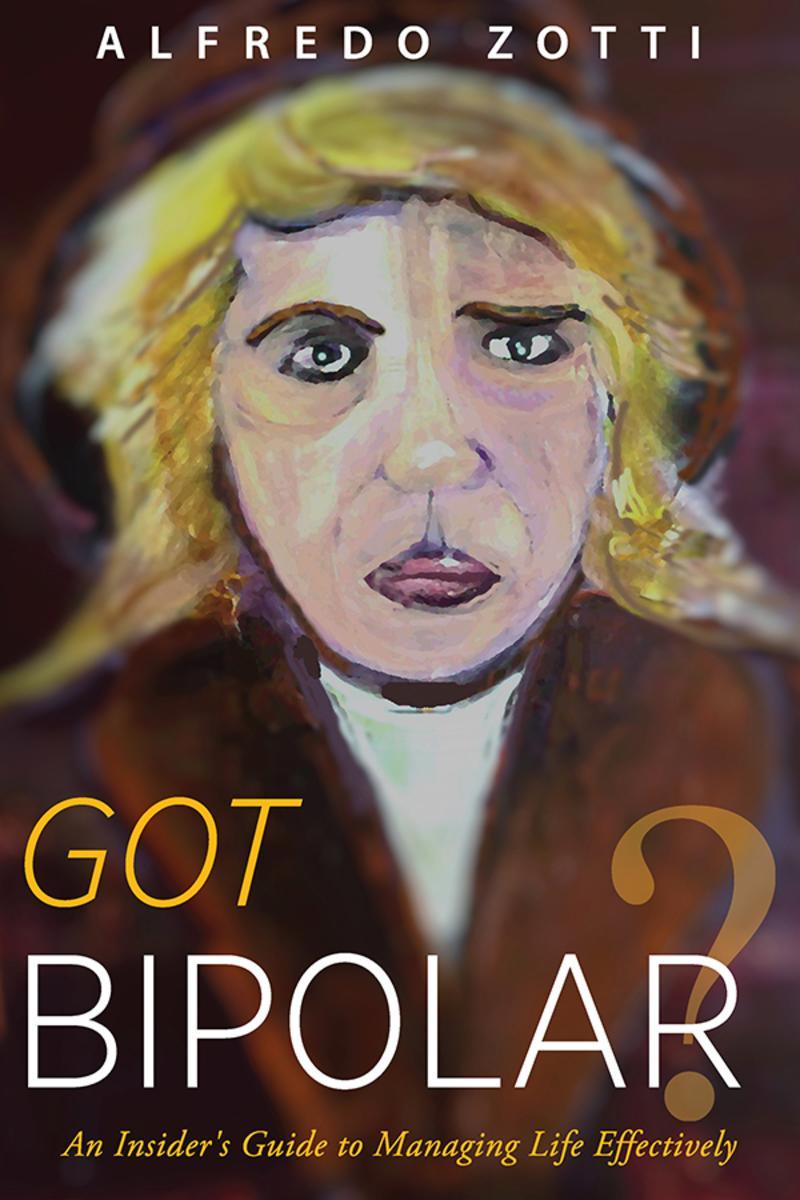
Got Bipolar?:An Insider's Guide to Managing Life Effectively
¥40.79
Marshal the Skills and Resources You Need to Live Your Best Life!This book is about how to recover from bipolar disorder, or at least how to attempt to recover from it. Sufferers will be briefly introduced to new coping skills including: emotional regulation, method acting, empathy development and relaxation. In order to get the most out of this book, you’ll need to develop your own strategies, based on the recommendations of this book.“In Got Bipolar?, Zotti offers unique insights based on his personal experience of coming to terms with his own bipolar condition. Applying method acting as an emotional regulation tool mirrors the work of Marsha Linehan and her concept of ‘opposite action to the emotion’, a tool long recognized as effective in regulating emotions. Additionally, his focus on developing hobbies and interests in one’s life also reflects Linehan’s emphasis on creating a life worth living through the pursuit of meaningful activities. Zotti’s book will, no doubt, provide an invaluable guide for sufferers of bipolar disorder and I highly recommend it.” --Paul Corcoran, Clinical Psychologist, Moving Forward“If you or someone you know has been diagnosed with Bipolar Disorder (BPD), Got Bipolar? is a good place to start to try to make sense of it all. Topics include self-care, medications, coping skills and responding to someone in crisis. Zotti has lived with BPD most of his life, so he has walked the talk. The messages are of hope, loving yourself throughout this process and, if you are looking for help with a loved one, recognizing that the person is more than just this illness.” -- Judy Wright, mental health patient advocate“Got Bipolar? offers a framework for the sufferer in need of skills to overcome symptoms. Zotti personally uses method acting as a coping skill to reverse mood states. Even a smile has the power to shift a low mood. He covers the basics, but it is up to the readers to increase their knowledge of emotional regulation, empathy development, relaxation techniques and other coping skills. This book is a really good primer for anyone suffering from Bipolar Disorder. -- Lewis Weir, BSWLearn more about the author at www.lhpress.com/authors/alfredo-zotti
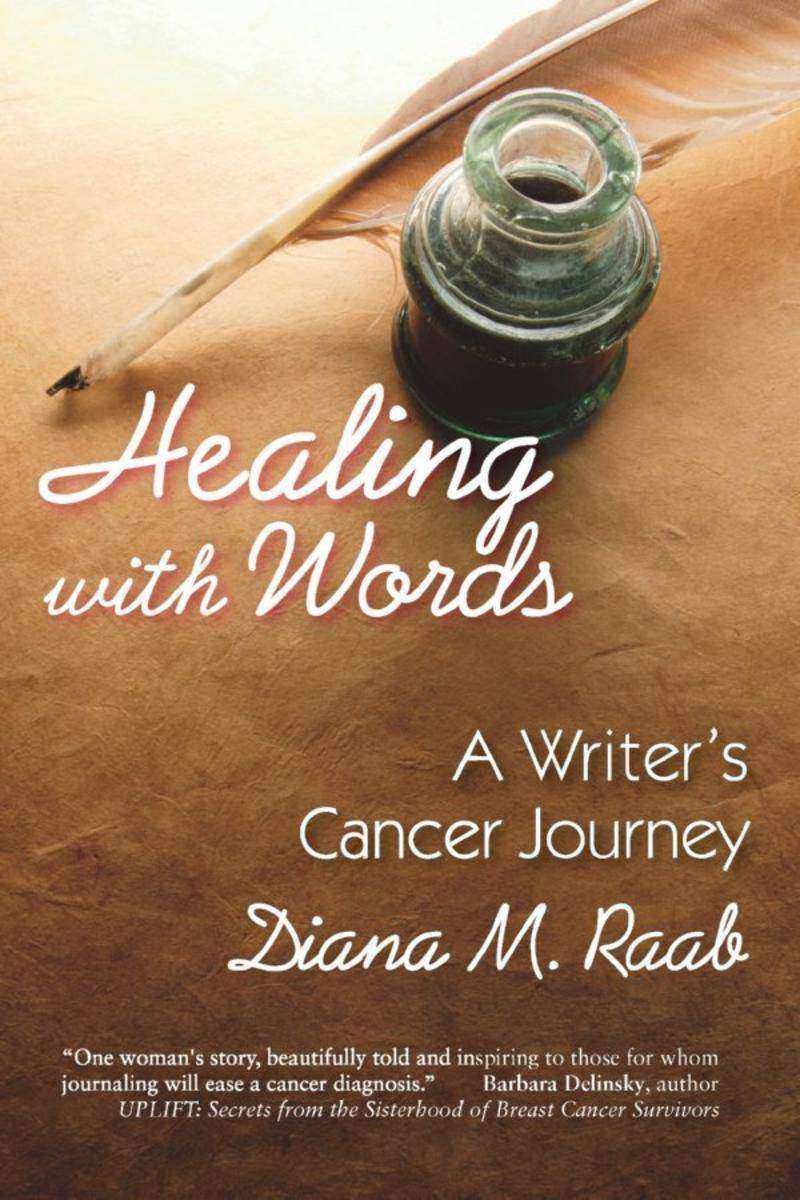
Healing With Words:A Writer's Cancer Journey
¥56.82
Healing With Words: A Writer's Cancer Journey is a compassionate and wry self-help memoir written by an award-winning prolific author, nurse and poet, who at the age of forty-seven found her life shattered first by a DCIS (early breast cancer) diagnosis and five years later by another, seemingly unrelated and incurable cancer--multiple myeloma. The book includes the author's experiences, reflections, poetry and journal entries, in addition to writing prompts for readers to express their own personal story. Raab's journals have provided a safe haven and platform to validate and express her feelings. Raab views journaling to be like a daily vitamin--in that it heals, detoxifies and is essential for optimal health.Readers will learn to: ·Understand the importance of early cancer detection and how to take control of their own health ·Discover the power of writing to release bottled-up emotions ·Learn how the process of journaling can facilitate healing ·See how a cancer diagnosis can be a riveting event which can renew and change a person in a unique way Praise for Raab's Healing With Words:"One woman's story, beautifully told and inspiring to those for whom journaling will ease a cancer diagnosis."--Barbara Delinsky, author UPLIFT: Secrets from the Sisterhood of Breast Cancer Survivors"Time after time, Diana articulates incisively the thoughts and feelings that convey hoped-for meaning and encouragement. She is a woman who knows what it is to live fully in the face of mortality. She will add value to the life of every person who reads this book. Healing With Words resonates at a spiritual level for me." --Sena Jeter Naslund, author of Ahab's Wife and Abundance: A Novel of Marie AntoinetteAuthor's proceeds from the sale of this book donated to benefit the Mayo Clinic FoundationLearn more at www.DianaRaab.comAnother inspirational book from Loving Healing Press www.LovingHealing.com
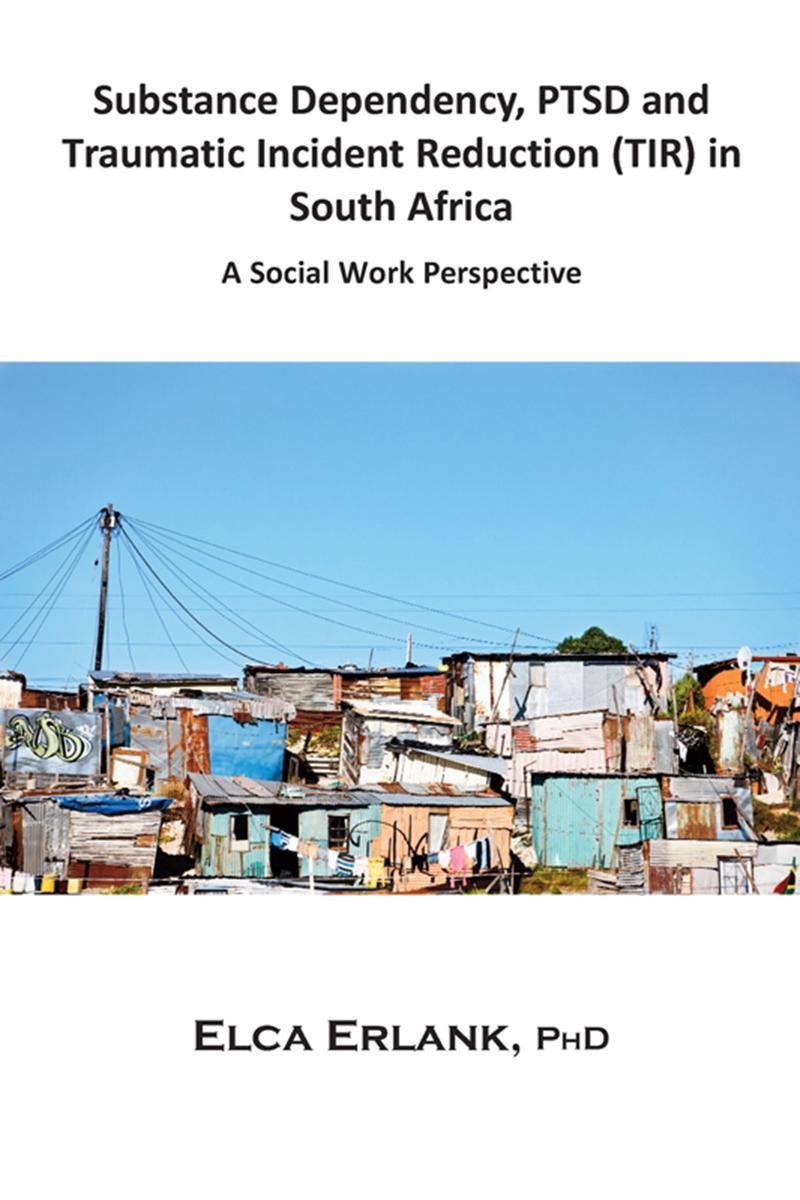
Substance Dependency, PTSD and Traumatic Incident Reduction (TIR) in South Afric
¥20.36
This article briefly reflects the extent to which substance dependency and traumatic events, which may lead to a diagnosis of a post-traumatic stress disorder, are becoming a feature of life all over South Africa. Many social workers are familiar with current evidence-based approaches and are skilled at adapting them to local cultural and contextual conditions. Exploring and continuing learning various evidence-based approaches to render more effective services are an important aim of social work practice. Metapsychology and Traumatic Incident Reduction (TIR), an Applied Metapsychology technique, are introduced to challenge social workers to render more integrated and effective services. The prevalence and comorbidity of substance dependency and PTSD Looking at statistics about substance dependency, as well as the high tendency of being a victim of trauma in South Africa, is it evident that social workers are confronted and challenged on a daily basis to improve their knowledge and skills in this regard. In South Africa, drug consumption is twice the world norm (CDA-2011) and 15% of South Africa's population has a drug problem (CDA-2011).Over 30% of the South African population have an alcohol problem or are at risk of having one and alcohol affects 17.5 million of South Africans. Studies show that people who start drinking before the age of 15 are four times more likely to become alcoholics than people starting to drink later in their life. The recently-released United Nations World Drug Report had named South Africa as one of the drug capitals of the world. When it comes to the abuse of alcohol and usage of dagga, this country is rated to be one of the top ten narcotics and alcohol abusers in the world (Addiction Drug Alcohol Statistics, S. A. 2012 About the Author Elca Erlank, Ph.D. became a TIR trainer in 2012. She has trained with both Gerald French and Yvonne Retief. Elca is a social worker, in South Africa with 22 years experience in various related fields of social work services. She had specialized in the field of substance dependence and received her doctorate degree in 2003. From the Metapsychology Monographs Series at www.TIRBook.com
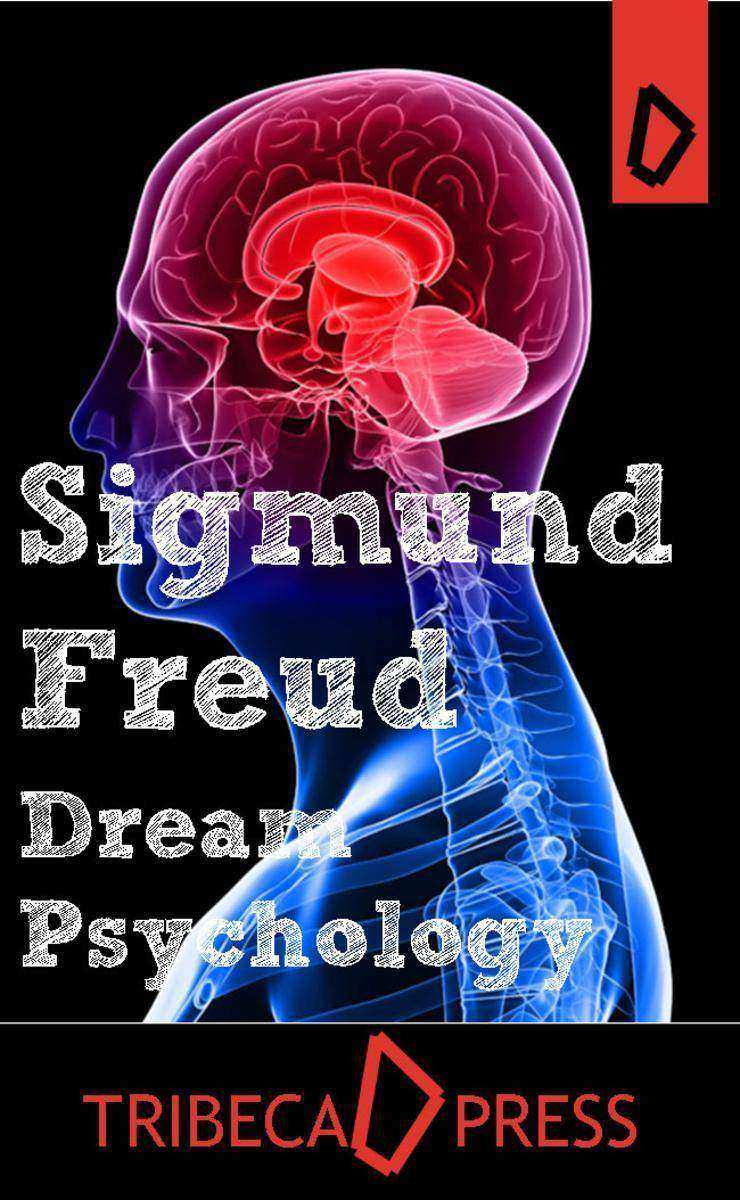
Dream Psychology
¥8.09
This Tribeca Press edition includes the full original text as well as exclusive images exclusive to this edition and an easy to use interactive table of contents.

Hatha Yoga Pradipika
¥24.44
Hatha Yoga Pradipika is among the most influential surviving texts on hatha yoga. The text describes asanas, purifying practices, shatkarma, mudras, finger and hand positions, bandhas, locks, and pranayama, breath exercises. The book explains the purpose of Hatha Yoga, the awakening of subtle energy kundalini, advancement to Raja Yoga, and the experience of deep meditative absorption known as samadhi.

Hardly Ever Otherwise
¥90.03
Painting a tortured picture of life’s harsh brutality in the region, Maria provides an insight into the complicated history of this remote corner of the Carpathian Mountains. Against the colourful backdrop of local traditions and highlanders’ rites she weaves her story of love, intertwined with a heart wrenching human tragedy, not avoiding intimate details of the anatomy of relationships between men and women. Enchanted by the impeccable style of this family saga, the reader becomes baffled by the character’s actions. In the words of Maria Matios the book is about people’s deeply concealed nature. When familiar passions like love and hate, joy and envy overcome them and it’s not in their nature to resist, consequences reach the catastrophic magnitude. Each character is flawed, detestable, but in the book’s finale they incite compassion as their painful past is steadily revealed. The eternal dilemma of sin and atonement pervades the pages of this book. The author does not shy away from carnal encounters and masterfully describes the psychology of lovers, accentuating people’s struggles on different levels.

D-Day: Airborne Assault
¥38.62
In any military operation throughout history, few 24-hour periods have been as crucial as that of 6th June 1944. With the aid of specially commissioned maps, D-Day: The First 24 Hours series gives the dramatic history of the first 24 hours of the Normandy landings, and explains in detail the events that occurred in each landing zone. In this second volume of the series, the book describes the airborne landings by paratroopers and glider troops that secured the flanks of the Allied beachheads, including such famous encounters as Pegasus Bridge and Ste Mère Eglise, as well as the more secret operations carried out by the SAS, SOE and Maquis. With colour and black & white photographs and specially commissioned maps, the book is a guide to key events in the first 24 hours of the D-Day landings that saw the Allies successfully achieve a foothold in Northern Europe.

A Poet and Bin-Laden: A Reality Novel
¥90.03
The “reality novel” A Poet and Bin-Laden set in Central Asia at the turn of the 21st century against a swirling backdrop of Islamic fundamentalism in the Ferghana Valley and beyond, gives a first-hand account on the militants and Taliban’s internal life. The novel begins on the eve of 9/11, with the narrator’s haunting description of the airplane attack on the Twin Towers as seen on TV while he is on holiday in Central Asia; and tells the story of an Uzbek poet Belgi, who was disappointed in the authoritarian regime in Uzbekistan and became a terrorist in the eyes of the world. His journey begins with a search for a Sufi spiritual master and ends in guerrilla warfare, and it is this tension between a transcendental and a violent response to oppression, between the book and the bomb, between Archipelago GULAG and modern Central Asia and Afghanistan, that gives the novel its specific poignancy. In this book Hamid Ismailov masterfully intertwines fiction with documentary and provides wonderfully vivid accounts of historical events such as the siege of Kunduz, the breakout from Shebergan prison and the insurgency in the Ferghana Valley as witnessed by the Byronian figure of Belgi, who enters the inner sanctum of al-Qaeda, and ultimately meets Sheikh bin Laden himself.

Taras Bulba
¥40.79
The story follows an old Cossack, Taras Bulba, and his two sons, Andriy and Ostap returning home from an Orthodox seminary in Kiev. Ostap is the more adventurous, whereas Andriy has deeply romantic feelings of an introvert. While in Kiev, he fell in love with a young Polish girl. The three men set later out on a journey to Zaporizhian Sich located in Southern Ukraine, where they join other Cossacks and go to war against Poland.




 购物车
购物车 个人中心
个人中心



